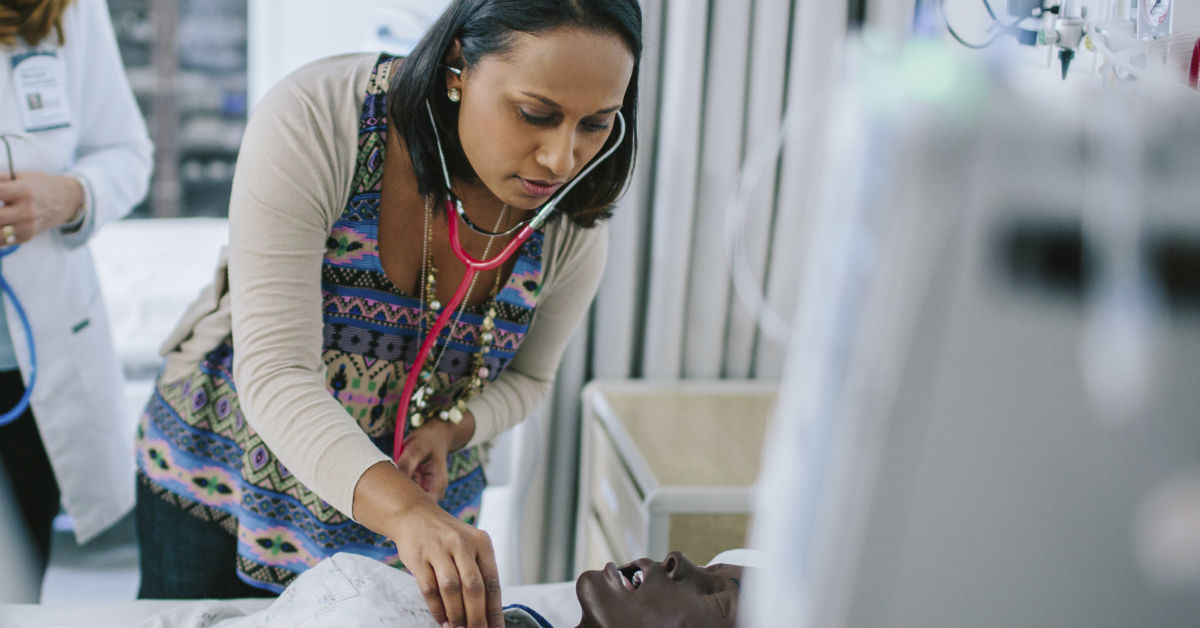
Editors’ Note: This is an excerpt from an opinion piece written by Einstein faculty member Dr. Lynne Holden. It first appeared on City Limits.org.
At a time when there are threats to an overburdened healthcare system that is barely serving a large segment of the population and when health disparities are great, there is an urgent need for a diverse health care workforce. The long-term payoff will be great for everyone.
My colleagues and I in the Bronx care for some of the neediest patients in one of the busiest the Emergency Departments in the city. Practicing for 23 years, I am one of only five African-American female physicians who are full professors in Emergency Medicine in the United States.
Multiple studies have demonstrated that culturally and linguistically symmetric providers help to increase access to quality medical care, improve health literacy, drive policy changes and, therefore, reduce health disparities. The struggle continues to have a health care workforce that reflects the diversity of the patients served.
In 2013, I conducted focus groups and published a paper that documented the perceived obstacles confronting urban students, parents and educators in New York City to achieving a career in healthcare. First, students and their parents lack confidence that a health career is even possible. Underlying such feelings are an unrealistic picture of the arduous career path required for entry into these fields, constantly discouraging messages received about opportunities for minorities, and the inability to access mentors. Second, there is a general lack of knowledge about resources available to assist students in the journey, resources such as enrichment programs, health professionals willing to serve as advisors and mentors, financial assistance and experiential learning opportunities. Finally, there is a lack of culturally symmetric role models.
Additionally, youth today are battling educational disparities, financial challenges, food insecurity, unstable housing, and family responsibilities. A recent study noted that 25 percent of 60,000 CUNY undergraduates experienced food insecurity, something that has been shown to adversely impact academic performance and mental health. Research of February 2019 by Kathryn Hill of NYU Steinhardt demonstrates that of 81,669 public school students beginning kindergarten in 2012, 10,312 had experienced homelessness prior to entering fifth grade. The neighborhoods impacted most include upper Manhattan, central and western Bronx, and northern Brooklyn and the populations most impacted are Latino (56 percent), Black (33 percent), Asian (6.3 percent), and Caucasian (3.5 percent).
These findings are eye opening. We can help to build diversity in the health care workforce and ensure culturally competent care for all, but we must address the needs of low-income students.
Steps that should be taken include:
1) Rigorous academic and experiential preparation to lay the foundation for college and career readiness needs to be available to all students, beginning in elementary school.
The NYC Department of Education has 22 NYC public schools that host 32 programs for Career and Technical Education in Healthcare that train students for ancillary health certifications, such as a Nurses’ Aide, Medical Administrative Assistant and Pharmacy Technician. However, the higher paying careers involve advanced academics and experiential preparation — frequently these are not readily available to minority and low-income students.
To read the rest of Dr. Holden’s opinion, please go to City Limits.org.

